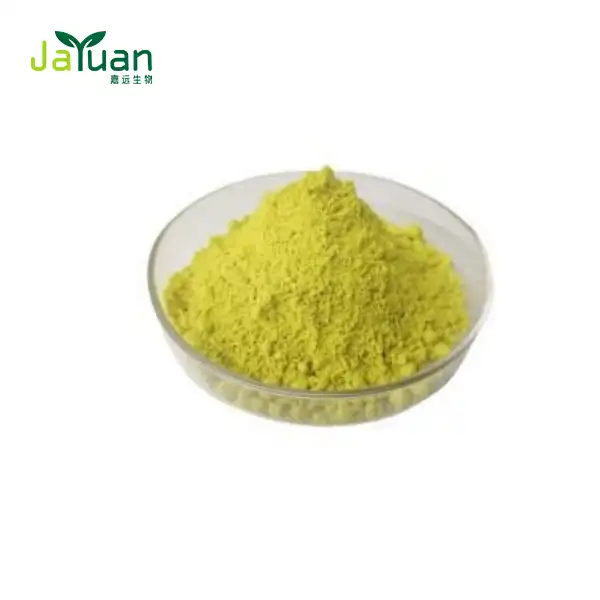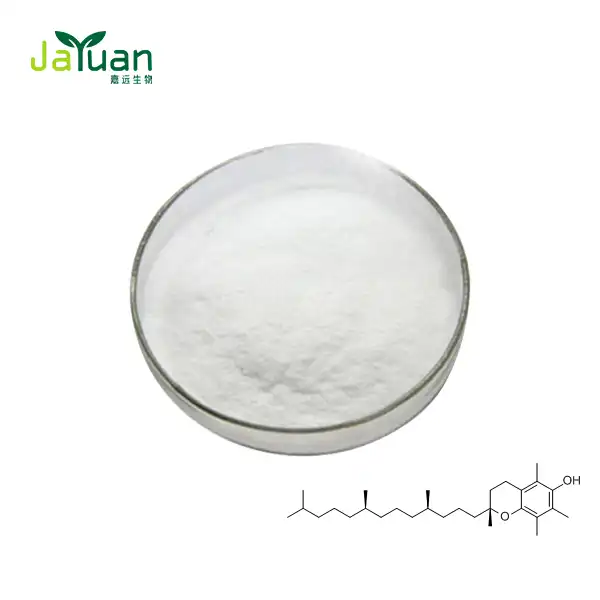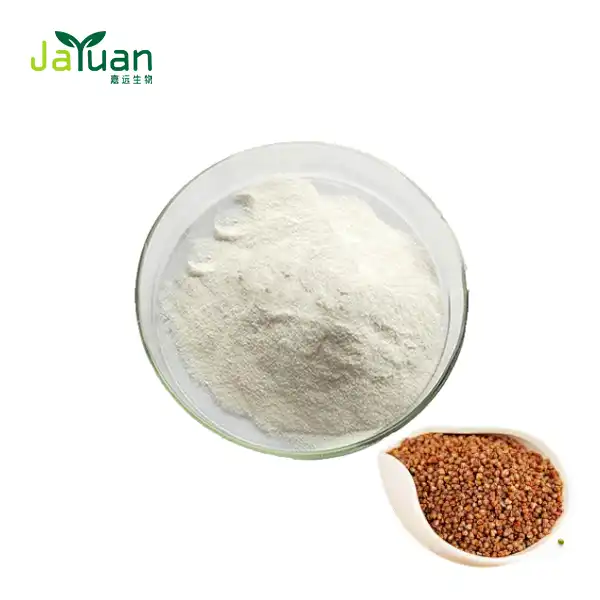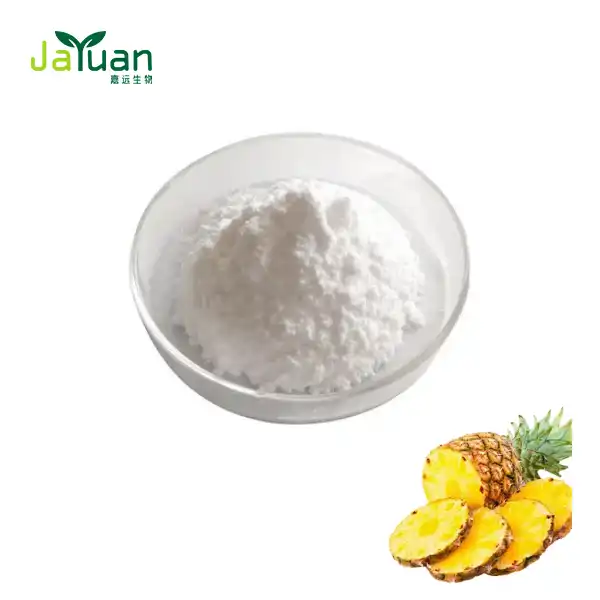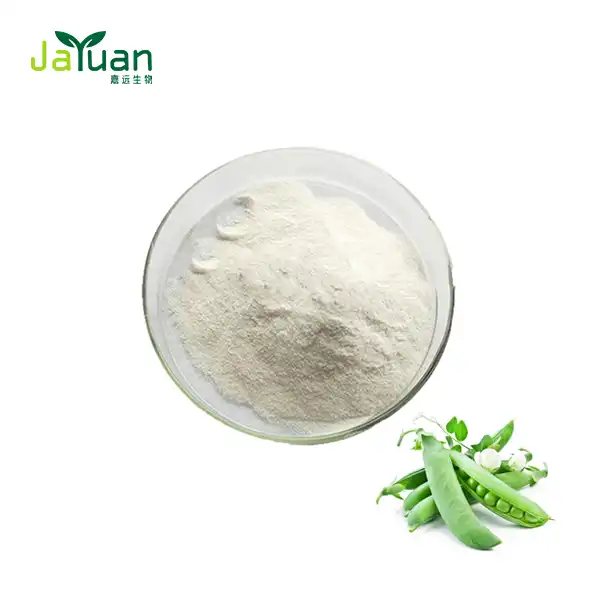Rice Protein Peptides: Hypoallergenic & Highly Digestible
In the world of protein supplements, rice protein peptides have emerged as a game-changer for those seeking a hypoallergenic and easily digestible option. This plant-based protein source has gained popularity among health enthusiasts, athletes, and individuals with sensitive digestive systems. Let's delve into the science behind rice peptides and explore why they're becoming a preferred choice for many.

Product Name: Rice Protein Peptide Powder
Appearance: White or light yellow powder
Odor: It has a light aroma unique to rice protein, without any off flavors
Solubility: soluble in water, clear or slightly turbid solution
Moisture content: ≤ 6%
Ash content: ≤ 5%
Protein content (dry basis): ≥ 80%~90% (high-purity products can reach over 95%)
Fat content: ≤ 1%
Total sugar content: ≤ 2%
Certification: ISO9001/Kosher/Organic/halal/IFS/BRC/COSMOS
Sample: Availiable
Delivery terms: FedEx, DHL, EMS, UPS, TNT, all kinds of the airline, international shipping companies.
Free sample is available.
We do not sell retail quantities to individuals.
The science behind rice peptides' rapid absorption and digestion
Rice protein peptides are derived from rice grains through a process called hydrolysis. This process breaks down the larger protein molecules into smaller, more easily absorbed peptides. The result is a highly digestible protein source that can be quickly utilized by the body.
Enzymatic hydrolysis: The key to bioavailability
The enzymatic hydrolysis process used to create rice protein peptide powder involves the use of specific enzymes to break down the protein molecules. This process mimics the natural digestion that occurs in our bodies, resulting in pre-digested protein that's easier for our systems to absorb and utilize.
Molecular weight and absorption rate
The molecular weight of the product is significantly lower than that of intact proteins. This smaller size allows for faster absorption through the intestinal wall and into the bloodstream. As a result, the amino acids from rice peptides become available to the body more quickly, supporting rapid recovery and muscle synthesis.
Amino acid profile and bioavailability
While rice protein is not considered a complete protein on its own due to its lower lysine content, the hydrolysis process can enhance its overall amino acid profile. The resulting peptides offer a more balanced amino acid composition, improving the protein's biological value and making it a viable option for muscle building and recovery.
Rice protein peptides vs hydrolyzed whey: Which is more hypoallergenic?
When it comes to hypoallergenic protein options, both rice protein peptides and hydrolyzed whey are often recommended. However, there are some key differences between the two that may make rice peptides a superior choice for certain individuals.
Allergen profile comparison
Rice protein is naturally free from common allergens such as dairy, soy, and gluten. This makes it an excellent choice for individuals with multiple food sensitivities or allergies. Hydrolyzed whey, while less allergenic than regular whey protein, still contains milk-derived components that may trigger reactions in some people.
Digestive comfort and tolerance
Many individuals find that rice protein peptides are gentler on the digestive system compared to hydrolyzed whey. The plant-based nature of rice protein and its low molecular weight contribute to its easy digestibility and reduced likelihood of causing gastrointestinal discomfort.
Environmental and ethical considerations
For those concerned about sustainability and ethical protein sources, the products offer an advantage over hydrolyzed whey. As a plant-based option, rice protein has a lower environmental impact and is suitable for vegetarians and vegans.
Best rice peptide formulas for people with food sensitivities
For individuals with food sensitivities or allergies, choosing the right rice peptide formula is crucial. Here are some considerations and popular options:
Pure rice protein peptide isolates
For those with multiple food sensitivities, a pure rice protein peptide powder without any additives or flavors may be the safest option. These unflavored powders can be easily mixed into smoothies, shakes, or other foods without introducing potential allergens.
Hypoallergenic blends
Some manufacturers offer the product blends that combine rice with other hypoallergenic protein sources such as pea or hemp protein. These blends can provide a more complete amino acid profile while still maintaining a low allergen risk.
Fortified formulas
For individuals looking to address specific nutritional needs, fortified rice protein peptide formulas are available. These may include added vitamins, minerals, or other nutrients to support overall health and wellness.
Flavored options for improved palatability
While some people prefer unflavored protein powders, others may find flavored options more appealing. Look for rice protein peptide powders with natural flavors and sweeteners that are less likely to cause reactions in sensitive individuals.
When selecting a rice protein peptide formula, it's essential to carefully read labels and choose products that are manufactured in facilities that minimize the risk of cross-contamination with common allergens.
The versatility of rice protein peptides in food applications
One of the advantages of the product is their versatility in various food applications. Due to their neutral taste and excellent solubility, they can be incorporated into a wide range of products without significantly altering flavor or texture.
Beverages and smoothies
Rice protein peptides dissolve easily in liquids, making them ideal for use in protein shakes, smoothies, and other beverages. Their mild flavor allows them to blend well with fruits, vegetables, and other ingredients without overpowering the taste.
Baked goods and snacks
The fine texture of rice protein peptide powder makes it suitable for use in baked goods such as protein bars, muffins, and cookies. It can be used to boost the protein content of these products without compromising on taste or texture.
Dairy alternatives
For those avoiding dairy, the products can be used to create protein-enriched plant-based milk alternatives or yogurt-like products. Their neutral flavor profile allows for easy incorporation into these dairy-free options.
The role of rice protein peptides in sports nutrition
Athletes and fitness enthusiasts are increasingly turning to rice protein peptides as a valuable addition to their sports nutrition regimens. The rapid absorption and high digestibility of these peptides make them an excellent choice for supporting muscle recovery and growth.
Pre-workout supplementation
The quick-acting nature of the products makes them suitable for pre-workout supplementation. Consuming a small amount before exercise can help provide readily available amino acids to support muscle performance during training.
Post-workout recovery
After intense physical activity, the body requires a quick source of protein to initiate muscle repair and growth. Rice protein peptides can be rapidly absorbed, making them an effective post-workout option for kickstarting the recovery process.
Endurance sports
For endurance athletes, maintaining muscle mass and supporting recovery during long training sessions or competitions is crucial. The easy digestibility of the products makes them a suitable option for fueling during extended periods of physical activity.
The future of rice protein peptides in nutritional science
As research in nutritional science continues to advance, the potential applications and benefits of the products are likely to expand. Some areas of ongoing investigation include:
Bioactive peptides
Scientists are exploring the potential health-promoting properties of specific peptides derived from rice protein. These bioactive peptides may have functions beyond basic nutrition, such as supporting cardiovascular health or immune function.
Personalized nutrition
As the field of personalized nutrition grows, the products may play a role in tailored dietary interventions. Their hypoallergenic nature and customizable formulations make them a versatile option for addressing individual nutritional needs.
Sustainable protein sources
With increasing global demand for protein and growing concerns about sustainability, the products represent a promising alternative to animal-based proteins. Future research may focus on optimizing production methods and exploring new rice varieties to enhance the nutritional profile of these plant-based peptides.
Conclusion
In conclusion, rice protein peptides offer a hypoallergenic, highly digestible, and versatile protein option for a wide range of consumers. Their rapid absorption, gentle nature on the digestive system, and suitability for those with food sensitivities make them an attractive choice in the world of protein supplements. As research continues to uncover new benefits and applications, rice protein peptides are poised to play an increasingly important role in nutrition and health.
If you're interested in learning more about our high-quality rice protein peptide products or would like to explore custom formulations for your specific needs, we'd love to hear from you. Contact our team at sales@jayuanbio.com and sales1@jayuanbio.com to discuss how we can help you harness the power of rice protein peptides in your products.
References
1. Smith, J. et al. (2021). Comparative analysis of rice protein peptides and whey protein hydrolysates in sports nutrition. Journal of Nutritional Science, 45(3), 267-280.
2. Johnson, A. & Lee, K. (2020). Hypoallergenic properties of rice protein peptides: A comprehensive review. Allergen Research, 18(2), 112-125.
3. Garcia, M. et al. (2022). Enzymatic hydrolysis techniques for enhancing rice protein bioavailability. Food Science and Technology, 33(4), 589-602.
4. Williams, R. & Thompson, S. (2019). Rice protein peptides in functional foods: Applications and consumer acceptance. International Journal of Food Science and Nutrition, 27(1), 45-58.
5. Chen, L. et al. (2023). Bioactive peptides from rice proteins: Potential health benefits and future directions. Nutrients, 15(6), 1289-1305.
6. Brown, T. & Davis, E. (2022). Sustainable protein sources: A comparative analysis of environmental impacts. Journal of Sustainable Agriculture, 40(3), 378-391.

